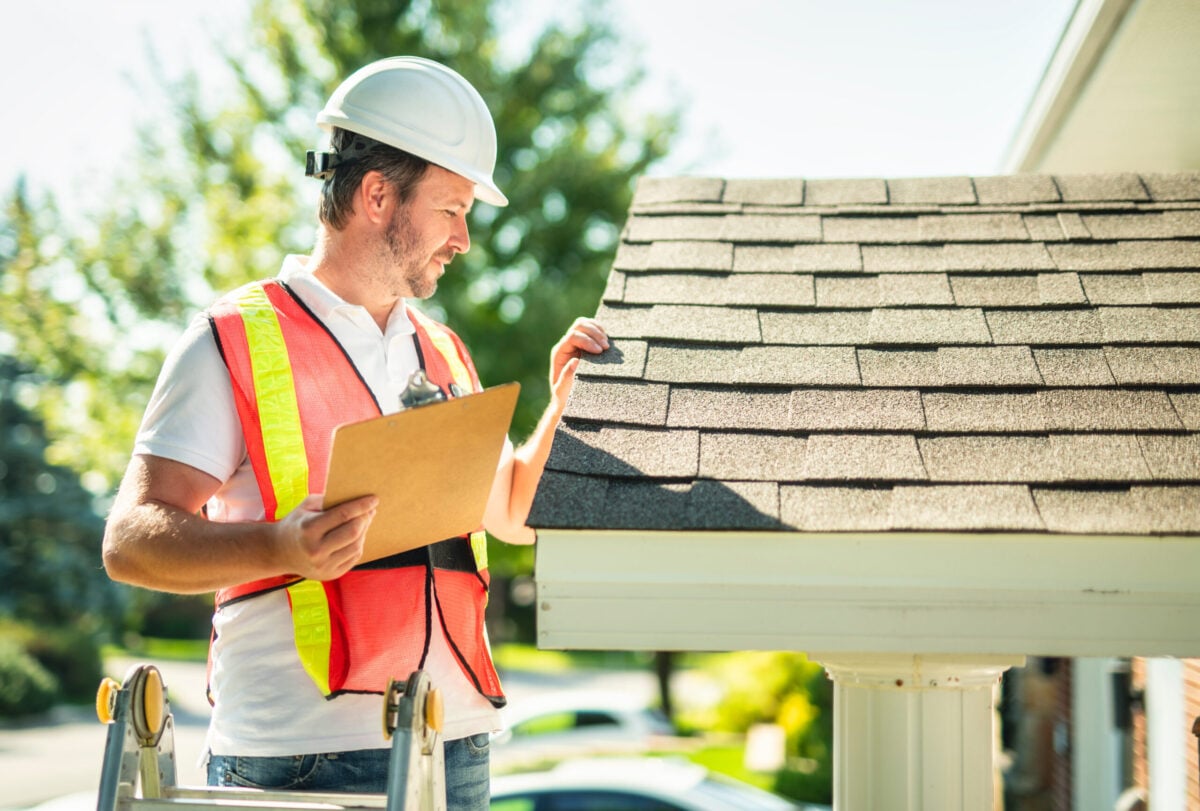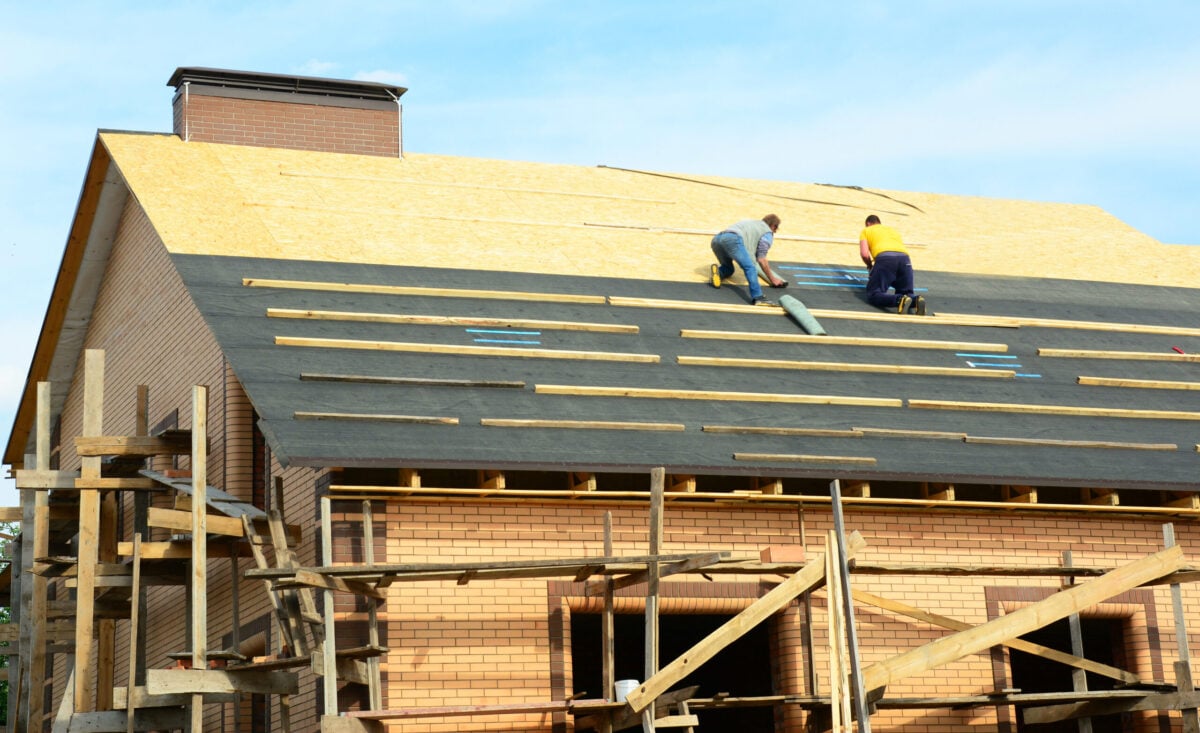Making the decision to repair or replace roof systems can feel overwhelming for any homeowner. Your roof protects everything you value most, and choosing the wrong option could cost you thousands of dollars or leave your family vulnerable to water damage and safety hazards.
The good news is that understanding when repairs are sufficient versus when replacement is necessary doesn’t require advanced roofing knowledge. By recognizing key warning signs and understanding the factors that influence this critical decision, you can make an informed choice that protects both your home and your budget.
Here’s what we’ll explore:
- Clear warning signs that indicate replacement is necessary
- Cost factors that influence the repair versus replacement decision
- How roof age affects your options
- When storm damage requires full replacement
🔎 Understanding the Basics: Repair vs. Replacement

Before diving into specific warning signs, it’s important to understand the fundamental difference between roof repairs and roof replacements. A roof repair addresses specific problems in localized areas of your roofing system. This might involve replacing a few damaged shingles, sealing small leaks, or fixing flashing around chimneys and vents.
A roof replacement, on the other hand, involves installing an entirely new roofing system. This comprehensive approach addresses widespread damage, aging materials, and structural issues that cannot be effectively resolved through spot repairs.
The key to making the right decision lies in understanding the scope and severity of your roof’s problems. Minor issues affecting less than 30% of your roof can often be handled through targeted repairs. However, when damage becomes widespread or involves critical structural components, replacement becomes the more practical and cost-effective solution.
Key Differences Between Roof Repairs and Replacements
Roof Repairs:
- Focus on localized issues.
- Examples include replacing damaged shingles, sealing small leaks, or fixing flashing.
- Suitable for minor damage affecting less than 30% of the roof.
Roof Replacements:
- Involves installing an entirely new roofing system.
- Addresses widespread damage, aging materials, or structural issues.
- Ideal for extensive or severe roof problems.
⚠️ 7 Clear Signs Your Roof Needs Replacement, Not Repair

Knowing when to replace your roof instead of repairing it can save you money and prevent bigger issues down the line. A damaged roof can lead to leaks, structural problems, and costly repairs if not addressed in time.
1. Widespread Shingle Damage Across Multiple Areas
When shingle damage appears in scattered locations across your roof, it often indicates that your entire roofing system is reaching the end of its useful life. Look for multiple areas where shingles are cracked, curling, missing granules, or completely absent.
If more than 30% of your roof shows signs of shingle deterioration, replacement typically provides better long-term value than attempting multiple repairs. Widespread shingle damage suggests that the remaining “good” shingles will likely fail within a few years, leading to ongoing repair costs.
2. Multiple Leak Points Throughout Your Home
A single leak might warrant a targeted repair, but multiple leaks appearing in different areas of your home signal more serious problems. When water finds multiple entry points, it indicates that your roof’s overall integrity has been compromised.
Multiple leaks often stem from failing underlayment, deteriorating flashing, or structural issues that cannot be addressed through spot repairs. Attempting to fix numerous leaks individually often proves more expensive than replacement while leaving you vulnerable to new leaks in other areas.
3. Significant Granule Loss Creating Bald Spots
Asphalt shingles rely on protective granules to shield them from UV rays and weather damage. When large sections of your roof show significant granule loss, the underlying shingle material becomes exposed and vulnerable to rapid deterioration.
Check your gutters regularly for excessive granule accumulation. Small amounts of granules are normal, especially on newer roofs, but large quantities indicate that your shingles are breaking down. Once granule loss becomes widespread, the remaining shingle life is measured in months rather than years.
4. Structural Sagging or Visible Roof Deck Problems
Any visible sagging in your roof line indicates serious structural problems that require immediate attention. Sagging can result from water damage to the roof decking, inadequate structural support, or the weight of multiple roof layers.
Structural issues cannot be resolved through surface repairs. If you notice sagging areas, dips in the roof line, or visible damage to the roof decking from inside your attic, full replacement is typically the only safe and effective solution.
5. Age-Related Deterioration Beyond 20 Years
Most asphalt shingle roofs are designed to last approximately 20 years when properly installed and maintained. If your roof is approaching or has exceeded this age threshold while showing multiple signs of wear, replacement becomes the more practical choice.
Older roofs often develop multiple problems simultaneously as various components reach the end of their designed lifespan. Rather than playing catch-up with ongoing repairs, replacement provides a fresh start with modern materials and improved energy efficiency.
6. Extensive Storm Damage Affecting Large Areas
Severe weather can cause damage that extends far beyond what’s visible from the ground. Hail damage, fallen trees, or high winds can compromise large sections of your roofing system simultaneously.
When storm damage affects more than 40% of your roof’s surface area, most insurance companies will approve full replacement rather than extensive repairs. Storm damage often involves hidden problems that become apparent only during professional inspection.
7. Rising Energy Costs Due to Poor Insulation Performance
An aging roof system often allows conditioned air to escape, forcing your HVAC system to work harder and increasing energy costs. If you’ve noticed steadily rising heating and cooling bills despite consistent usage patterns, your roof’s insulation performance may be compromised.
Modern roofing systems offer significantly improved energy efficiency through better ventilation, insulation, and reflective materials. The energy savings from a new roof can help offset replacement costs over time.
💵 Cost Considerations When You Repair or Replace Roof Systems

Understanding the financial implications of repair versus replacement helps ensure you make the most economical decision for your situation. While repairs typically cost less upfront, they may not provide the best long-term value when extensive problems exist.
Short-Term vs. Long-Term Financial Impact
Roof repairs generally range from a few hundred to several thousand dollars, depending on the scope of work required. However, when multiple repairs become necessary within a short timeframe, costs can quickly approach replacement levels.
Roof replacement represents a larger upfront investment but provides decades of protection with minimal maintenance requirements. Consider the total cost of ownership over 15-20 years when evaluating your options.
Insurance Coverage Considerations
Your homeowner’s insurance policy may influence the repair versus replacement decision. Many policies cover storm damage differently depending on the extent of damage and the age of your existing roof.
If your roof qualifies for insurance coverage, replacement might cost significantly less out-of-pocket than you expect. Contact your insurance provider to understand your coverage options before making your final decision.
Financing Options for Roof Replacement
Many roofing contractors offer financing programs that make replacement more affordable by spreading costs over several years. These programs often feature competitive interest rates and flexible payment terms.
When evaluating financing options, compare the monthly payment to the ongoing costs of repairs and higher energy bills associated with an aging roof system.
👨🔧 Choose K&D Roofing for Your Roofing Needs
At the end of the day, whether you decide to repair or replace your roof, the most important step is choosing a team you can trust to get the job done right. At K&D Roofing, we pride ourselves on delivering honest assessments, expert craftsmanship, and unparalleled customer service. With our GAF Master Elite certification, industry-leading warranties, and commitment to using only the highest quality materials, you can rest assured your home is in the best hands.
From thorough inspections to hassle-free coordination with insurance companies, we make the process smooth and stress-free. Don’t leave your home’s protection to chance—contact K&D Roofing today for a free professional inspection and let us help safeguard your most important investment.

